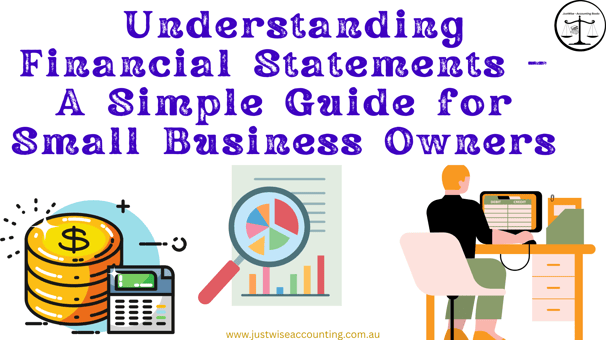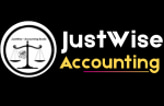Financial Statements Explained | Profit & Loss, Balance Sheet, Cash Flow for Small Business
Justwise Accounting
2 min read


Understanding Financial Statements – A Simple Guide for Small Business Owners
As a business owner, you don’t need to become an accountant — but you do need to understand your financials.
At a minimum, every small business owner should know how to read and interpret three key financial statements:
Profit & Loss Statement
Balance Sheet
Cash Flow Statement
These reports provide a snapshot of how your business is performing, where your money is going, and how healthy your finances are. Here's how to understand each one — in plain English.
1. What Is a Profit and Loss Statement?
Also known as an income statement, the Profit & Loss (P&L) shows how much money your business made (or lost) over a specific period.
Key parts:
Income (e.g., sales, services)
Cost of goods sold
Operating expenses (e.g., rent, software, marketing)
Net profit or loss
Easy way to understand it:
If your income is higher than your expenses, you’re making a profit. If not, you’re running at a loss. Reviewing your P&L monthly helps you spot trends, reduce costs, and make informed decisions.
2. What Is a Balance Sheet?
The Balance Sheet is a snapshot of your business’s financial position at a specific point in time. It answers the question: What do I own, and what do I owe?
Key parts:
Assets (e.g., cash, equipment, stock)
Liabilities (e.g., loans, unpaid bills)
Equity (owner's stake in the business)
Easy way to understand it:
Your total assets should equal your liabilities plus your equity. It’s called a “balance” sheet for a reason. This report is useful for lenders, investors, and when you’re preparing to scale.
3. What Is a Cash Flow Statement?
This report shows how cash moves in and out of your business — not just what you’ve earned on paper.
Key parts:
Operating cash flow (day-to-day income and expenses)
Investing cash flow (equipment, asset purchases)
Financing cash flow (loans, repayments)
Why it's important:
You can be profitable on paper but still run out of cash. Understanding your cash flow helps prevent late payments, overdrafts, and missed tax deadlines.
4. What Are Management Reports?
Management reports go beyond standard financial statements. They help you answer deeper questions like:
Which products or services are most profitable?
What’s your break-even point?
Are expenses growing faster than revenue?
How are you tracking against your business goals?
Bookkeepers and accountants can prepare custom management reports each month or quarter to support better decision-making.
5. How to Manage Receipts and Paperwork (The Easy Way)
Organising receipts and business documents doesn’t need to be painful.
Best practices for small to medium business owners:
Use cloud-based tools like Xero or Hubdoc to snap and store receipts
Attach documents directly to transactions in your software
Set up monthly folders for statements, payroll, and invoices
Automate bill entry where possible (e.g., repeating bills in Xero)
Keep digital backups — don’t rely on shoeboxes or filing cabinets
Not only does this save you time, it also protects you during ATO audits and speeds up your BAS and EOFY processes.
Final Thoughts
Understanding financial statements isn’t just for accountants — it’s essential for running a successful business.
The Profit & Loss shows your performance
The Balance Sheet shows your position
The Cash Flow Statement shows your movement
Add smart document management and tailored reporting, and you’ll have a solid financial foundation for growth. If you’d like help setting up these reports or interpreting your numbers, Justwise Accounting is here to support your business journey.
Stay in Touch
© 2025 JustWise Accounting. All rights reserved. ABN 85 581 353 385
⚠️ We respect your privacy. Unsubscribe anytime. (under subscribe button)
Serving Australia-wide
Justwise acknowledge the Traditional Owners of the lands where we operate and pay respect to Elders past and present.
